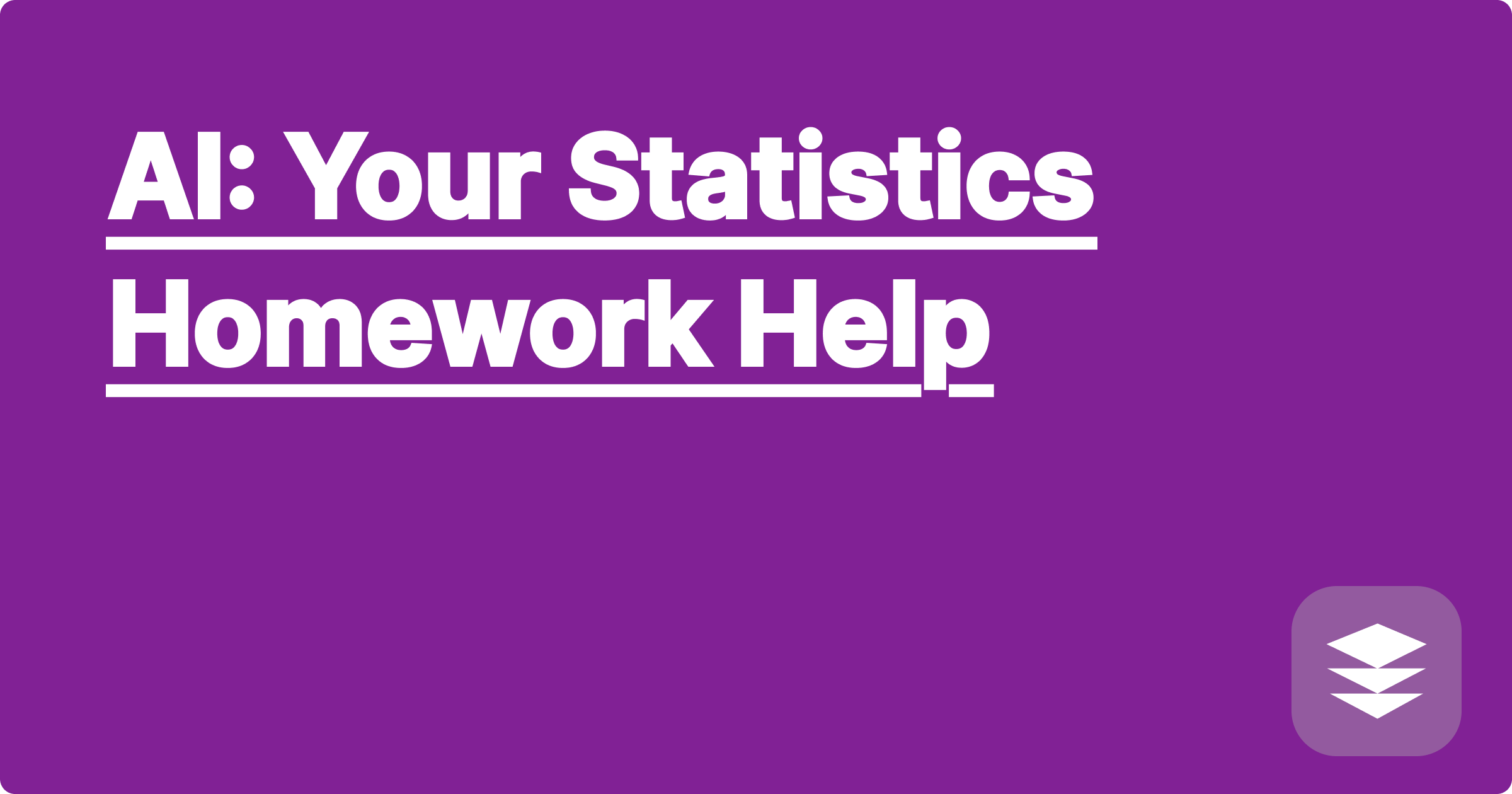
STEM fields are notorious for their rigorous coursework, and statistics often presents a significant hurdle for many students. Grappling with complex statistical concepts, deciphering cryptic formulas, and wrestling with software packages can be overwhelming. Fortunately, the rise of artificial intelligence offers a powerful new set of tools to help students navigate these challenges and gain a deeper understanding of statistical principles. AI can act as a personalized tutor, providing step-by-step explanations, generating practice problems, and even helping with coding assignments.
This emerging technology isn't just about simplifying homework; it's about democratizing access to advanced statistical knowledge and empowering the next generation of STEM professionals. For researchers, AI can automate tedious tasks, analyze massive datasets, and uncover hidden patterns, freeing up valuable time for more creative and impactful work. Embracing these tools can significantly enhance both learning and research outcomes, ultimately accelerating progress across various scientific disciplines.
Statistics plays a crucial role in STEM, providing the framework for analyzing data, drawing meaningful conclusions, and making informed decisions. However, the inherent complexity of statistical concepts can be daunting. Students often struggle with understanding probability distributions, hypothesis testing, regression analysis, and other core statistical methods. Furthermore, applying these concepts to real-world problems requires proficiency in statistical software like R or Python, which adds another layer of complexity. This learning curve can be steep, leading to frustration and hindering progress in STEM education and research. The sheer volume of data encountered in modern research further complicates matters, making traditional statistical methods time-consuming and often inadequate. The need for efficient and powerful tools to handle these challenges is more pressing than ever.
AI-powered tools like ChatGPT, Claude, and Wolfram Alpha offer a promising solution to these statistical challenges. These platforms leverage sophisticated algorithms to provide interactive learning experiences, automate complex calculations, and offer insightful interpretations of data. ChatGPT and Claude, for instance, can be used to clarify conceptual questions, provide step-by-step solutions to problems, and even generate practice questions tailored to specific learning objectives. Wolfram Alpha excels in symbolic computation and can handle complex statistical calculations, visualize data, and provide detailed explanations of statistical formulas and concepts. By integrating these tools into their workflow, STEM students and researchers can significantly enhance their understanding and application of statistical methods.
Imagine you're struggling with a hypothesis testing problem. You can start by posing a clear and concise question to ChatGPT or Claude, such as "How do I perform a two-tailed t-test to compare the means of two independent samples?" The AI will then provide a detailed explanation of the t-test procedure, including the underlying assumptions and the steps involved in calculating the test statistic. It can even generate example problems and walk you through the solutions. For more complex calculations, Wolfram Alpha can be invaluable. Simply input the relevant data and specify the desired statistical test, and Wolfram Alpha will compute the results, including p-values and confidence intervals. Furthermore, it can visualize the data using histograms, scatter plots, and other graphical representations, providing a more intuitive understanding of the results.
Consider a scenario where you need to analyze the correlation between two variables, such as temperature and plant growth. You can input your data into Wolfram Alpha using a command like "correlation coefficient of {x1, x2, x3...} and {y1, y2, y3...}," where x and y represent your data points. Wolfram Alpha will then calculate the correlation coefficient (e.g., Pearson's r) and provide a scatter plot visualizing the relationship between the variables. Alternatively, you can use ChatGPT to understand the theoretical underpinnings of correlation analysis. You could ask, "Explain the difference between Pearson and Spearman correlation," and the AI will provide a detailed comparison of these two methods, outlining their respective strengths and limitations. For coding assignments in R or Python, ChatGPT can assist in generating code snippets for specific statistical tasks, such as performing linear regression or calculating ANOVA.
To maximize the benefits of AI in STEM education and research, it's essential to use these tools strategically. Don't rely solely on AI to solve problems without understanding the underlying concepts. Instead, use AI to supplement your learning and reinforce your understanding. Always double-check the results generated by AI and ensure they align with your expectations. Furthermore, be mindful of the limitations of these tools. AI models are trained on vast amounts of data, but they may not always be accurate or applicable to every specific scenario. Finally, remember that AI is a tool, not a replacement for critical thinking and human judgment. By combining the power of AI with your own intellectual curiosity and problem-solving skills, you can achieve significant academic success in STEM.
To effectively integrate AI into your workflow, start by experimenting with different platforms and identifying the tools that best suit your needs. Explore the various features and functionalities of each platform. Practice formulating clear and concise questions to elicit the most helpful responses from AI chatbots. Develop a habit of critically evaluating the information provided by AI and cross-referencing it with other sources. By embracing a proactive and discerning approach, you can harness the full potential of AI to enhance your learning and research endeavors and contribute to the advancement of STEM fields.
AI Homework Help: STEM Made Easy
Ace STEM Exams: AI Study Guide
AI for Lab Reports: Data Analysis
AI: Your Physics Homework Solver
Engineering AI: Boost Your GPA